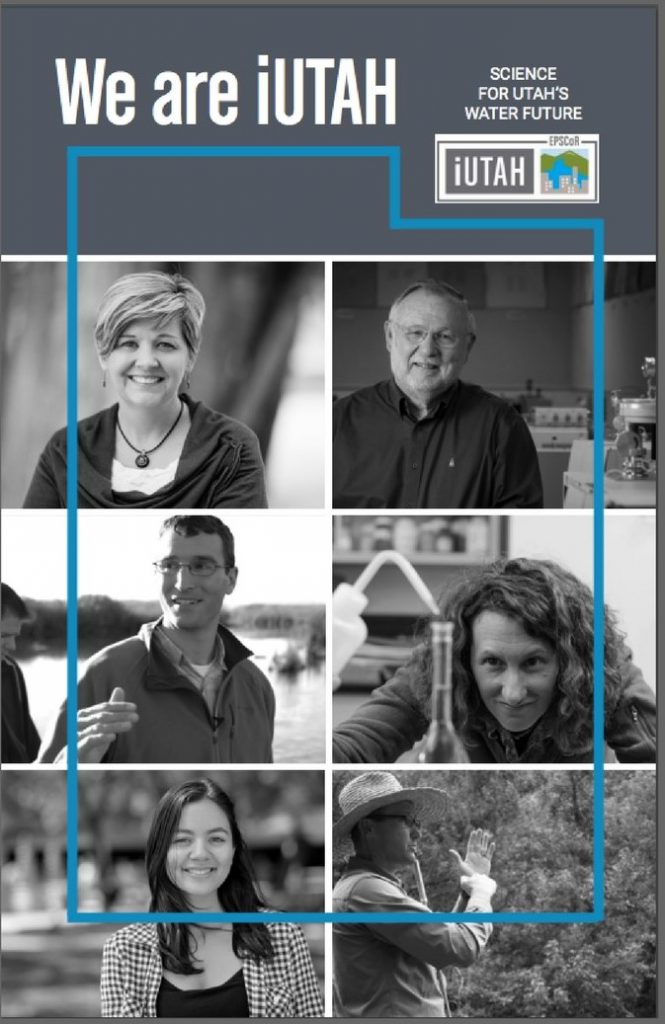We’re continuing to share reflections from the 2017 Community Engagement Fellows on the blog. In today’s post, Andy Leidolf introduces his four part series, “The Community Manager’s Survival Guide: Building Social Capital in Large, Heterogeneous, Geographically Dispersed Research Networks.” You can catch up on all posts by the Fellows here.
Posted by Andy Leidolf, Coordinator, Honors Program, Utah State University, and Executive Director, Society for Freshwater Science. Leidolf served as iUTAH Assistant Director and Project Administrator from 2014-2018.
If you have been following my series of blog posts (thank you!), I have probably succeeded by now in convincing you that iUTAH was a large, complex, and diverse project that would pose any number of challenges for even the best-trained and most well-resourced community manager. Having already shared my thoughts on how to deal with geographic dispersion and institutional diversity, I want to end by considering a third and final challenge: transcending boundaries imposed by collaborators’ differences in disciplinary background.
Jargon, Jargon, Everywhere!
From the very beginning, iUTAH was conceived as an interdisciplinary project spanning research, training, education, and outreach; and involving academic and non-academic partners, their stakeholders and the general public. It is this set-up that made the project unique in our state and has allowed it to develop deeply impactful and societally relevant research over time.
But, for this to happen, we first had to build a space where professionals from disciplines as diverse and distinct as hydrology, biology, aquatic ecology, civil engineering, sociology, applied economics, geology, geography, urban planning, landscape architecture, atmospheric science, and communication science could all come together to collaborate to address and (hopefully) solve real-world problems. The Science of Team Science tells us that interdisciplinary teams produce more impactful research. But team science is also a high payoff-high risk proposition and many teams fail. This is because the very characteristics of teams that make them such powerful tools to address critical issues also make them susceptible to failure:
- Practitioners trained in different disciplines each have their own unique jargon—the language and vocabulary they use when communicating with their peers that frequently means little or nothing to people from different disciplines
- Methodologies used by different disciplines and areas of investigation can vary dramatically, as can the way in which they are perceived and evaluated—or judged—by others
- Foundational approaches and philosophies can seem quite different—even incompatible—among disciplines
I learned that the hard way, when—one day—I found myself in the middle of a heated conference call that attempted to reconcile the meaning of “data” among a group of physical and social scientists. Who knew that smart, reasonable people could disagree on so much so vehemently? Clearly, this needed to be addressed before we could move forward as a team.
The iUTAH Data Policy -A First Step towards “Project Commons”
The iUTAH Data Policy was conceived quite early in our project, even before I joined. Its main purpose was to outline a common vision for and commitment to open access and public sharing of all iUTAH data. Mandated by the National Science Foundation, who funded our project, it quickly became a core value for our project and its participants.
Of course, as with many things, the devil proved to be in the details. Over the years, we realized that living up to both letter and spirit of this guiding document was frequently hindered by lack of a common language: what constitutes data, metadata, and derivative data products; what qualifies as an investigator-created resource; what is intellectual property; what are reasonable timelines to relax or completely surrender control over one’s data and research products? As it turns out, social scientists, modelers, and physical scientists all gave very different answers to these questions. Hence that conference call.
And so we modified the policy, incrementally at first, but more significantly as time went by. Designing a policy broad enough to make sure that iUTAH’s published data would be useful to everybody, but narrow and specific enough to address the unique needs of various disciplines (such as anonymization and disambiguation of human subjects data, or the treatment of model inputs, outputs, and simulation runs) forced us to align our goals, recognize and acknowledge our individual methodologies and approaches, and re-draw our mental maps to develop common ground: not just an amalgamation of individual disciplinary perspectives, policies, and special considerations, but a single, comprehensive expression of norms and values managed for the collective benefit of all—our first project “commons.”
Uniquely iUTAH
Of course, disciplinary background is not the only factor that makes our participants different from one another. We also had to contend with different professional backgrounds, different career stages, different professional affiliations and work sectors. And so, over time, other “commons” developed in the iUTAH project.
Some came in the form of written documents and policies; others were more informal, such as in how we held meetings or interacted and conversed with one another; how we thought or talked about diversity, inclusion, and broader impacts; what we assumed about the person across from us, their motivations, aspirations, goals and challenges.
But all were manifestations of a shared vision and purpose expressed in a common language that was universal, inclusive, and uniquely iUTAH. Collectively, they ensured that each and every one of our participants felt valued and understood. And I would argue that—across a project of over 800 participants—that is no small feat.
Image provided by Andy Leidolf.
